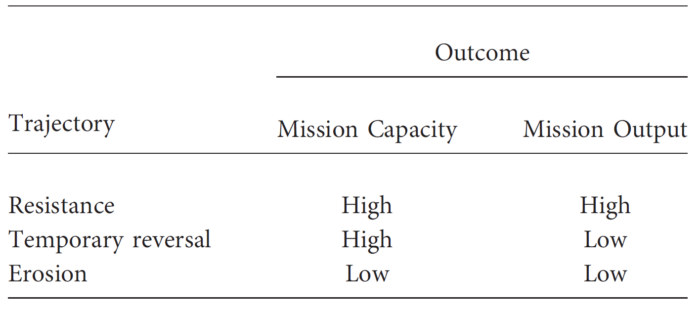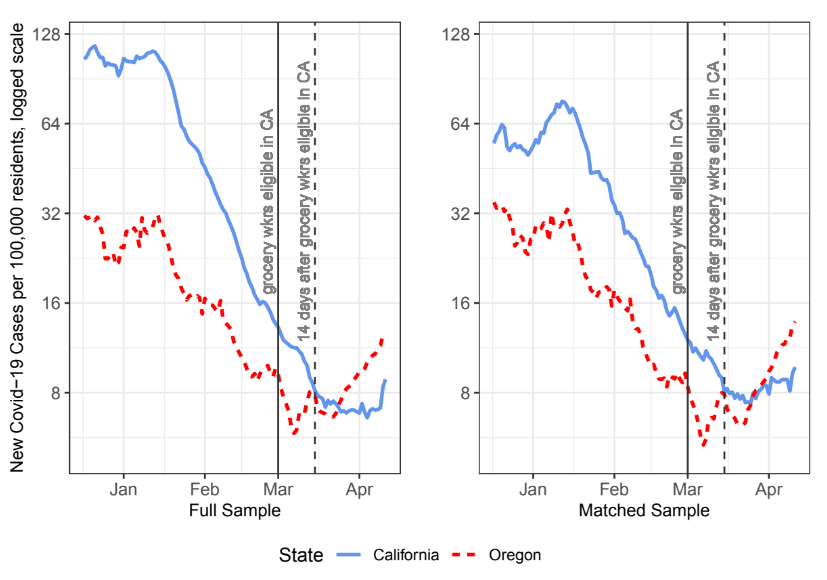The public sector must hold the capacity to effectively address pressing concerns such as climate change and environmental degradation. In the United States, this role is primarily fulfilled by the federal Environmental Protection Agency (EPA), which defines its mission as “protect[ing] human health and the environment.” One of its most vital functions is to enforce environmental regulations through civil litigation and to refer particularly harmful cases to the Department of Justice for criminal prosecution. Yet the EPA’s record of enforcement is near record lows. In 2022, the EPA closed the fewest number of civil cases in the last twenty years and referred the second lowest number of polluters to the Department of Justice. This is despite the fact that the EPA is under the leadership of Administrator Michael Regan, an appointee of President Biden. Biden is fairly supportive of environmental policies and oversaw the passage of arguably the largest investment in combating climate change in U.S. history via the Inflation Reduction Act. Given that the current administration appears to support enforcement, what explains the EPA’s inability to achieve one of its core goals?
The answer lies in what happened before the Biden administration. Under the Trump administration, the EPA was led by a series of administrators who actively sought to undermine the enforcement of environmental regulations. This led to an exodus of qualified staff that David Uhlmann, the current head of the EPA’s Office of Enforcement and Compliance Assurance, credits with undermining enforcement well into a much more environmentally friendly administration.
Long Term Consequences of Institutional Disruption
The disruption at the EPA is representative of a general trend of leaders (often with populist leanings) who have sought to either undermine or dramatically alter the core institutional aims of public sector organizations. More generally, institutional disruption has occurred in recent years in a variety of contexts in which leaders seek to undermine the foundational goals of an organization. These include the public sectors of the United States, Brazil, and select agencies characterized as “islands of efficiency” in developing countries, as well as international organizations such as the IMF and World Bank. When do these disruptive leaders succeed? Or what factors can instead ensure the stability of mission success?
In a forthcoming article, I present a theory to chart the possible trajectories of an organization when leaders enact institutional disruption. I detail a game theoretic model that captures a two-level principal-agent hierarchy in which lower-level workers enact policy and are overseen by supervisors. The overarching organization is directed by a leader who may attempt to reorient the core mission of the organization by altering career incentives. This structure is illustrated in Figure 1.
The model uncovers three trajectories an organization may follow when led by a disruptive leader. There is “erosion,” in which employees who are most motivated by an organization’s mission leave for the private sector. As a result, the organization’s core capacity to produce policy that aligns with its central mission is permanently diminished. Then there is “temporary reversal,” in which mission-driven employees remain at the agency but are temporarily diverted from pursuing mission-aligned policy because of the disruptive leader’s changes in career incentives. In this case, the underlying capacity to produce mission-oriented policy remains intact but realized output suffers. Finally, there is “resistance,” in which mission-driven employees continue to pursue mission-oriented policies despite the potential negative career repercussions, thereby maintaining both the capacity and realized output consistent with an organization’s mission. These trajectories and their accompanying consequences are summarized in Table 1.

Social Norms and Culture
What factors determine an organization’s trajectory? The degree of hierarchical authority within the organization, external accountability mechanisms such as courts or legislative oversight that monitor agency leadership, the likelihood that a leader takes over who favors the organization’s mission, and the value of career opportunities outside the organization all play a role. Perhaps most decisive is the organizational culture and the specific orientation of social norms within the agency. If there is a critical mass of mission-oriented supervisors within an organization, it may become an expected, “focal” action, i.e., a norm, to pursue mission-oriented policies despite potential disruption by leadership. Hence, this can manifest in a norm of mission compliance so strong that it reinforces incentives for mission-oriented behavior. As a result, a strong mission-driven culture can rebuff attempts at disruption by leaders and even discourage them from pursuing disruption in the first place.
Capacity Erosion
If erosion occurs, can the organization recover? Figure 2 shows the challenges involved. The horizontal axis depicts the proportion of mission-driven supervisors in the organization in the second period of the model (the time period after a leader has implemented disruption). When this proportion is higher, there exists a complementarity such that it strengthens the organization’s culture and norms, making the organization more likely to avoid an erosion scenario. However, should erosion nevertheless occur, recovery depends on the rate at which mission-driven employees are replaced. The middle, orange line shows when this rate is equal to the initial proportion of mission-driven supervisors in the organization. Even at this identical rate, there is a decline in future mission capacity. As the article further details, this is because only mission-driven supervisors leave the organization, while those who are more career-motivated remain. Thus, as new employees enter the organization, who are either relatively mission- or career-driven individuals, the overall proportion of mission-driven supervisors in the agency declines.

Environmental Protection Going Forward
The model illuminates several challenges facing disrupted organizations like the EPA. Focusing on the EPA’s enforcement unit, the need to replace employees who left under the Trump administration requires that they must not only continue to rehire employees, but also, as the model details, compensate for the fact that the individuals who left were likely highly mission-driven. This is because, under the Trump administration, they were the least likely to be content to be part of an organization that was undermining its core mission of environmental protection. Moreover, as the article notes, the difficulties may only increase as we get closer to November. Expectations about who will control the agency in the future affect both the willingness to stay with the organization and who joins. Environmentally motivated employees may be wary of joining the organization given the possibility that another Trump presidency could lead to further, and perhaps more widespread, environmental disruption. While time will tell if and how the EPA recovers, the article offers insights into the critical factors that shape the trajectory of disrupted organizations.
This blog piece is based on the forthcoming Journal of Politics article “Reversals of Capacity: Norms, Culture, and Institutional Disruption” by Daniel A. N. Goldstein.
The empirical analysis has been successfully replicated by the JOP and the replication files are available in the JOP Dataverse
About the Author
Daniel A. N. Goldstein is a Postdoctoral Fellow/Assistant Professor at the University of Oslo. His research focuses on the impact of social norms and informal institutions on the cohesion and survival of democratic institutions and state capacity.



